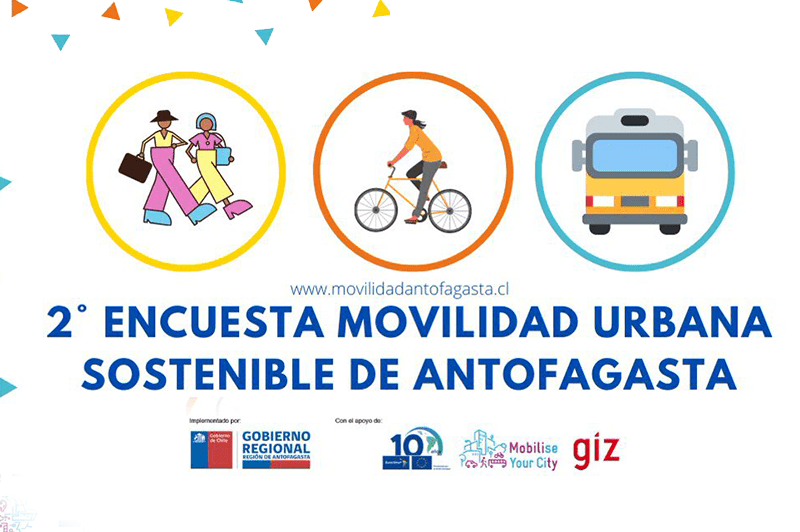A workshop was held on the definition of scenarios and diagnostic citizen surveys and scenarios were carried out.
Antofagasta, Chile, October 16.- Antofagasta is making progress in the construction of its sustainable mobility scenarios for its Sustainable Urban Mobility Plan (SUMP), currently in development under the framework of the EUROCLIMA+ programme. This will be done through a workshop with technical participation from the government and considering citizen opinion through surveys carried out during August, September, and October.
As part of the project's scenario definition phase, two online surveys were conducted for the citizens of Antofagasta. The first, carried out in August, focused on the diagnosis of sustainable urban mobility in the city. The second focused on basic scenarios for Antofagasta's SUMP and was carried out from September 21 to October 6. On October 2, the workshop “Definition of Scenarios and Adaptation of Principles for the Antofagasta SUMP” was held, in which the Technical Panel for the Antofagasta SUMP participated.
Diagnostic survey of mobility
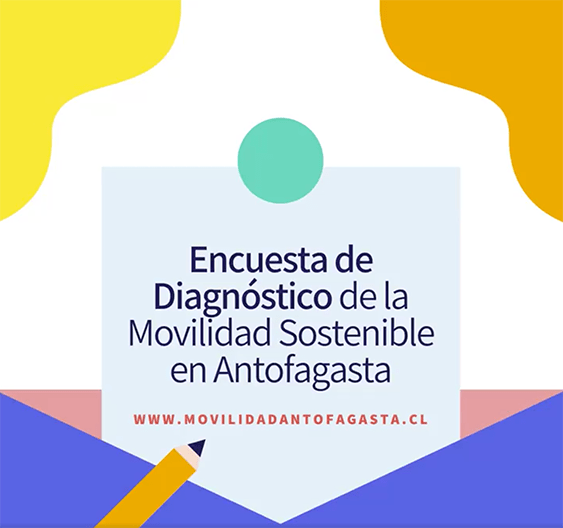
The first survey had more than 380 responses and reached a confidence level of more than 95%, addressing questions aimed at the use of different modes of transport (pedestrian, bicycle, public and private transport, among others), the perception of comfort, efficiency and safety of these modes, and the contribution of the transport sector in the current climate crisis.

Among the most prominent responses, we can find that 56% of the respondents use private cars as their main means of transport, while 44% recognise this mode as highly polluting and 29% as highly expensive. In addition, 33% recognise that they choose their main means of transport based on the comfort it represents, over and above its effectiveness in terms of travel times.
On the other hand, in terms of positive attributes, active mobility (pedestrian and cycling) is recognised as healthy, while public transport is recognised as economical, while in terms of negative attributes, walking is considered slow, cycling unsafe, and public transport uncomfortable and polluting.
These responses, in addition to others, may indicate that there is some awareness of the disadvantages of private car use and that under certain parameters walking, cycling, and the use of public transport represent more effective, healthy, and clean modes. However, despite this, as long as transport options are not diversified and public transport is not qualitatively improved, people would prefer to continue using their private cars.
Finally, 85% of those surveyed recognise that motorised vehicles have a high impact on the climate crisis and nearly 70% are willing to take actions or make commitments to reduce the climate crisis, as long as these are part of a long-term plan that allows for the monitoring and evaluation of the actions taken.
Survey on mobility scenarios
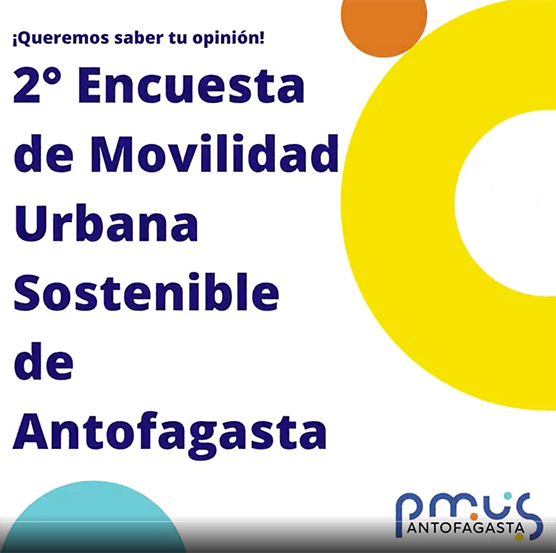
On the other hand, the second survey focused on future mobility scenarios in Antofagasta and had 185 responses. Among the main results, 75% considered that, if development trends continue and without implementing relevant changes in transport policies, in the next 15 years there will be a high level of congestion in the city compared to the current situation, thanks to sustained growth in the vehicle fleet.
In terms of future mobility hypotheses, 37% believe that there will be a lack of pedestrian spaces, 66% believe that public transport will function similar to the way it does now, and 58% believe that bicycle use will grow enormously, and there will be more cycle paths to move around the city safely in the next 15 years.
According to citizens, active mobility and public transport will have a priority role in the SUMP by 2035: 82% bicycling, 70% public transport (taxis and collective taxis), 60% walking; on the other hand, the car obtained an average priority of 50%.
One of the future challenges in Antofagasta is the city’s urban growth. 56% of the population considers that “the city will continue to expand towards the north and south, having to travel longer distances to access goods and services, but allowing the generation of new low-income housing districts”. One of the scenarios put forward during the technical panel workshop proposed a specific guideline that contemplates integrating elements of urban planning to modify travel patterns in the city.
The same workshop proposed policy guidelines that should be integrated into the Antofagasta SUMP. The citizens voted for these guidelines as follows:
- (LP1) Public Transport: 60%
- (LP4) Clean Technologies: 57%
- (LP2) Non-Motorised Modes: 57%
- (LP5) Land Use: 46%
- (LP6) Transport Logistics: 38%
- (LP3) Automobile Disincentives: 37%
Finally, on the possible scenarios for the formulation of the Antofagasta SUMP, 41% consider that it should “implement measures to prioritise road spaces towards sustainable modes, even if this means introducing other direct measures to discourage the use of private cars”. 35% believe that this should be done without implementing measures that reduce spaces for other forms of mobility, such as the private car, and 22% believe that the SUMP should try to improve all possible modes of mobility, not just the so-called sustainable ones, even if these do not contribute to mitigating the effects of climate change.
Technical workshop for scenarios
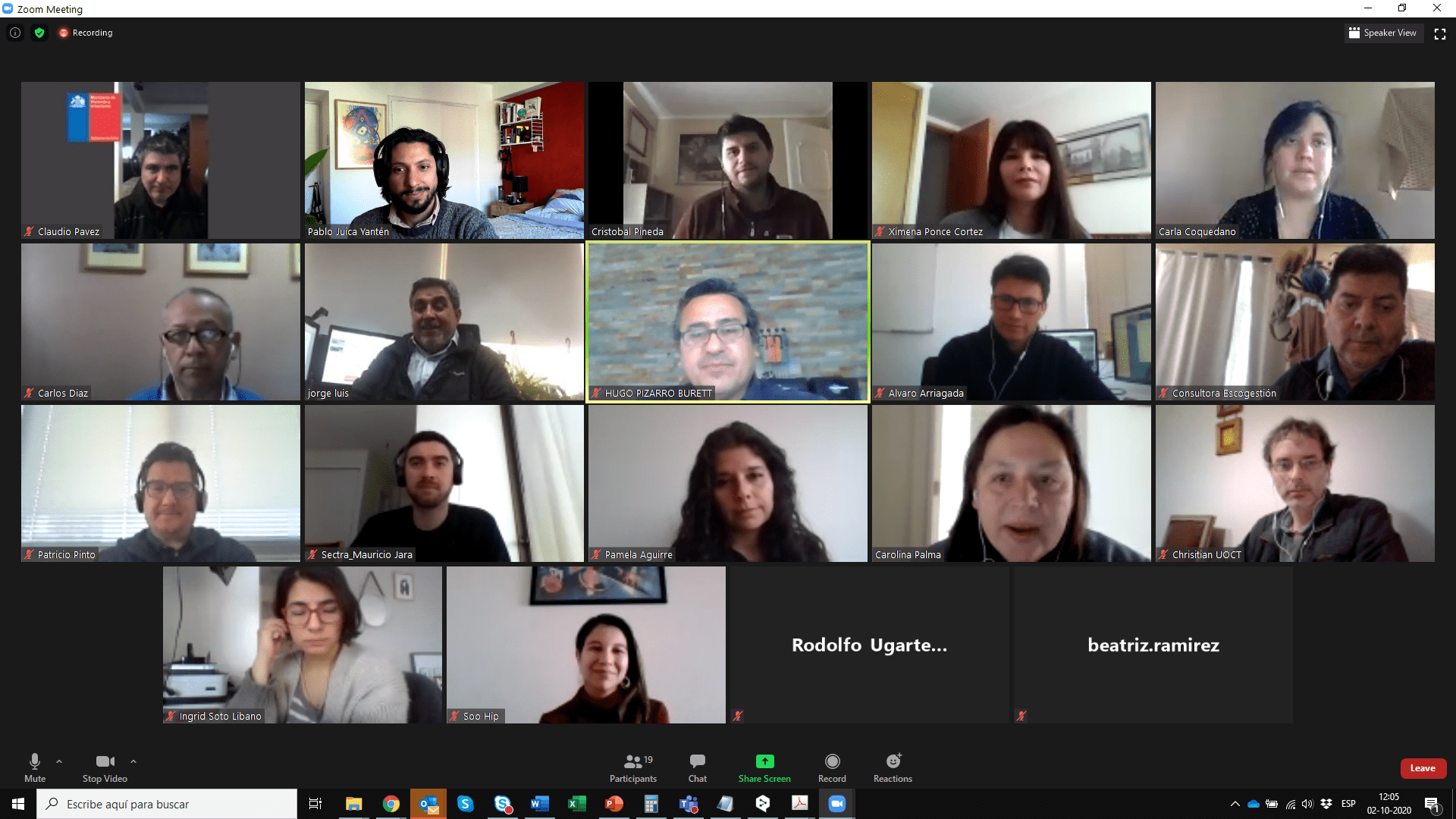
On October 2, the Technical Panel Workshop Nº1 "Definition of Scenarios and Adaptation of Principles for the Antofagasta SUMP" was held, in which the SUMP target territory, policy guidelines and basic mobility scenarios were defined. This was the first of seven workshops to be held during the study Strategic Development and Planning of Measures, Sustainable Urban Mobility Plan (SUMP) of Antofagasta, led by the Antofagasta Regional Government and implemented by GIZ Chile under the framework of the EUROCLIMA+ programme and executed by the consulting firm City Planning.
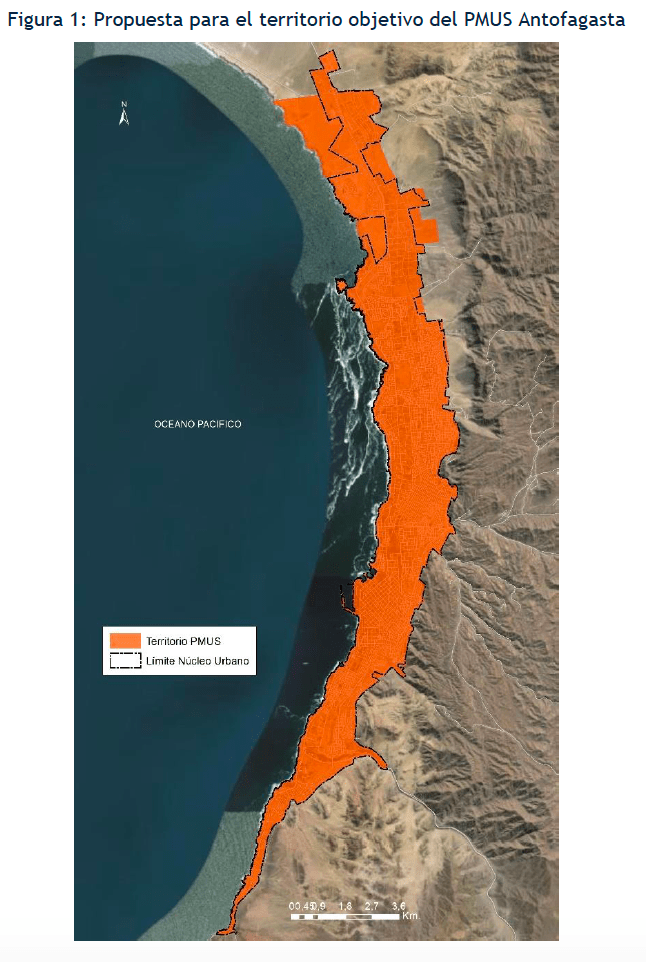
As part of this process, the first workshop brought together the institutions involved in the Technical Panel for Antofagasta's Sustainable Urban Mobility Plan (SUMP): Antofagasta Regional Government, Illustrious Municipality of Antofagasta, CREO Antofagasta, Roads and Urban Transport Programme - SECTRA North, and the Regional Ministerial Secretariats (SEREMI) of the Environment, Housing and Urban Planning, Energy, Women and Gender Equity, and Transport and Telecommunications.
The event included a series of working group discussions and a general debate to agree on and validate the points made. The topics discussed included the proposal for the Antofagasta SUMP target territory, considering the census information provided by INE and MINVU. In addition, six policy guidelines on mobility were proposed to be incorporated into the construction of scenarios in a modular manner:
- (LP1) Public Transport: Improvement of the quality and levels of service of the modes that make up public transport (buses and collective taxis) and possible development of new modes of mass public transport.
- (LP2) Non-Motorised Modes: Improving the quality and levels of service of non-motorised modes, including cycling and pedestrian infrastructure, and improving accessibility and safety.
- (LP3) Automobile Disincentives: Effective internalisation of social costs involved in automobile use, so that its use reflects the real value it imposes on the rest of the city's inhabitants.
- (LP4) Clean Technologies: Replacement of the city’s vehicle fleet with very low or zero emission vehicles, tending to eliminate the existing direct pollution due to the use of motorised vehicles.
- (LP5) Land Use: Regulation and incentives to modify the pattern of activities in the urban area of the city, tending towards mixed uses that allow localisation needs to be brought closer to the people.
- (LP6) Transport Logistics: Improvement of inflow and outflow of goods transport between the Port of Antofagasta and the productive nuclei located outside the city.
Based on diagnostics, the consulting firm City Planning built four mobility scenarios in the city of Antofagasta:
- (E0) Scenario without Modifications or Business as Usual (BAU): Maintenance of the prevailing public policies in urban mobility in Antofagasta with the initiatives already committed to, as well as the maintenance of socio-economic trends foreseen for the future.
- (E1) Sustainable Mobility Scenario: Development and promotion of sustainable modes (non-motorised modes and public transport), without changing the prevailing policies for other motorised modes
- (E2) Sustainable Mobility Scenario with Prioritisation of Modes: Diversifies institutional and financial efforts, by focusing the axes of action within the concept of the inverted mobility pyramid. This scenario allows prioritising policies and measures towards these more efficient modes to the detriment of others when available resources are limited.
- (E3) Mobility and Land Use: In addition to the guidelines already introduced in scenarios E1 and E2, there is a specific guideline that goes beyond the scope of urban transport. This is the use of land, which includes the introduction of urban planning elements to modify the pattern of travel in the city, with the aim of reducing travel distances.
To learn more about the EUROCLIMA+ Project “Plan to Strengthen Sustainable Mobility in the City of Antofagasta”, consult the following link.
About EUROCLIMA+
EUROCLIMA+ is a programme financed by the European Union to promote environmentally sustainable and climate-resilient development in 18 Latin American countries, particularly for the benefit of the most vulnerable populations. The Programme is implemented under the synergistic work of seven agencies: the Spanish Agency for International Development Cooperation (AECID), the French Development Agency (AFD), the Economic Commission for Latin America and the Caribbean (ECLAC), Expertise France (EF), International and Ibero-American Foundation for Administration and Public Policy (FIIAPP), the German Society for International Cooperation (GIZ), and UN Environment.
For more information:
About the Urban Mobility sector: This email address is being protected from spambots. You need JavaScript enabled to view it.
About the project: Pablo Juica (This email address is being protected from spambots. You need JavaScript enabled to view it. )
www.euroclimaplus.org
